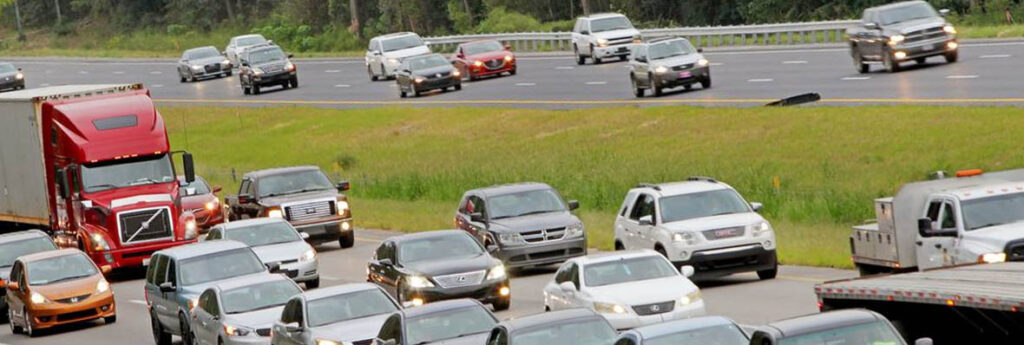In the largest US evacuation of the pandemic, more than half a million people were ordered to flee the Gulf Coast on Tuesday as Laura strengthened into a hurricane that forecasters said could slam Texas and Louisiana with ferocious winds, heavy flooding and the power to push seawater miles inland.
More than 385,000 residents were told to flee the Texas cities of Beaumont, Galveston and Port Arthur, and another 200,000 were ordered to leave low-lying Calcasieu Parish in southwestern Louisiana, where forecasters said as much as 13 feet (4 metres) of storm surge topped by waves could submerge whole communities.
The National Hurricane Centre projected that Laura would draw energy from warm Gulf waters and become a Category 3 hurricane before making landfall late Wednesday or early Thursday, with winds of around 115 mph (185 kph). The strengthening may slow or stop just before landfall, forecasters said.
“The waters are warm enough everywhere there to support a major hurricane, Category 3 or even higher. The waters are very warm where the storm is now and will be for the entire path up until the Gulf Coast,” National Hurricane Centre Deputy Director Ed Rappaport said.
Louisiana Gov. John Bel Edwards said Laura is shaping up to look a lot like Hurricane Rita did 15 years ago when it ravaged southwest Louisiana.
“This is a major hurricane. It’s going to be a large, powerful storm,” Edwards said. “All of coastal Louisiana should brace for storm surge, and this is going to be a significant amount of storm surge.”
Ocean water was expected to push onto land along more than 450 miles (724 kilometres) of coast from Texas to Mississippi. Hurricane warnings were issued from San Luis Pass, Texas, to Intracoastal City, Louisiana, and storm surge warnings from the Port Arthur, Texas, flood protection system to the mouth of the Mississippi River.
Officials urged people to stay with relatives or in hotel rooms to avoid spreading the virus that causes COVID-19. Buses were stocked with protective equipment and disinfectant, and they would carry fewer passengers to keep people apart, Texas officials said.
The storm also imperiled a centre of the US energy industry. The government said 84% of Gulf oil production and an estimated 61% of natural gas production were shut down. Nearly 300 platforms have been evacuated.
While oil prices often spike before a major storm as production slows, consumers are unlikely to see big price changes because the pandemic decimated demand for fuel.
As of Tuesday afternoon, Laura was 480 miles (770 kilometres) southeast of Lake Charles, Louisiana, travelling northwest at 17 mph (28 kmh). Its peak winds were 80 mph (130 kph).
Laura passed Cuba after killing 20 people in Haiti and three in the Dominican Republic, where it knocked out power and caused intense flooding.
As much as 15 inches (38 centimetres) of rain could fall in some parts of Louisiana, said Donald Jones, a National Weather Service meteorologist in Lake Charles, Louisiana.
In Galveston and Port Arthur, Texas, mandatory evacuation orders went into effect shortly before daybreak Tuesday. “If you decide to stay, you’re staying on your own,” Port Arthur Mayor Thurman Bartie said.
Shelters opened with cots set farther apart to curb coronavirus infections. People planning to enter shelters were told to bring just one bag of personal belongings each, and a mask to reduce the spread of coronavirus.
“Hopefully it’s not that threatening to people, to lives, because people are hesitant to go anywhere due to COVID,” Robert Duffy said as he placed sandbags around his home in Morgan City, Louisiana. “Nobody wants to sleep on a gym floor with 200 other people. It’s kind of hard to do social distancing.”
Officials in Houston asked residents to prepare supplies in case they lose power for a few days or need to evacuate homes along the coast. Some in the area are still recovering from Hurricane Harvey three years ago.
Laura’s arrival comes just days before the Aug. 29 anniversary of Hurricane Katrina, which breached the levees in New Orleans, flattened much of the Mississippi coast and killed as many as 1,800 people in 2005. Less than a month later, Hurricane Rita struck southwest Louisiana as a Category 3 storm.
Laura wasn’t much of a concern for Kerry Joe Richard of Stephensville, Louisiana. As the storm approached, he was angling for catfish from a small dock overlooking the bayou that’s behind his elevated wood-frame home.
“The only thing I’m worried about is if the fish quit biting,” he said.

